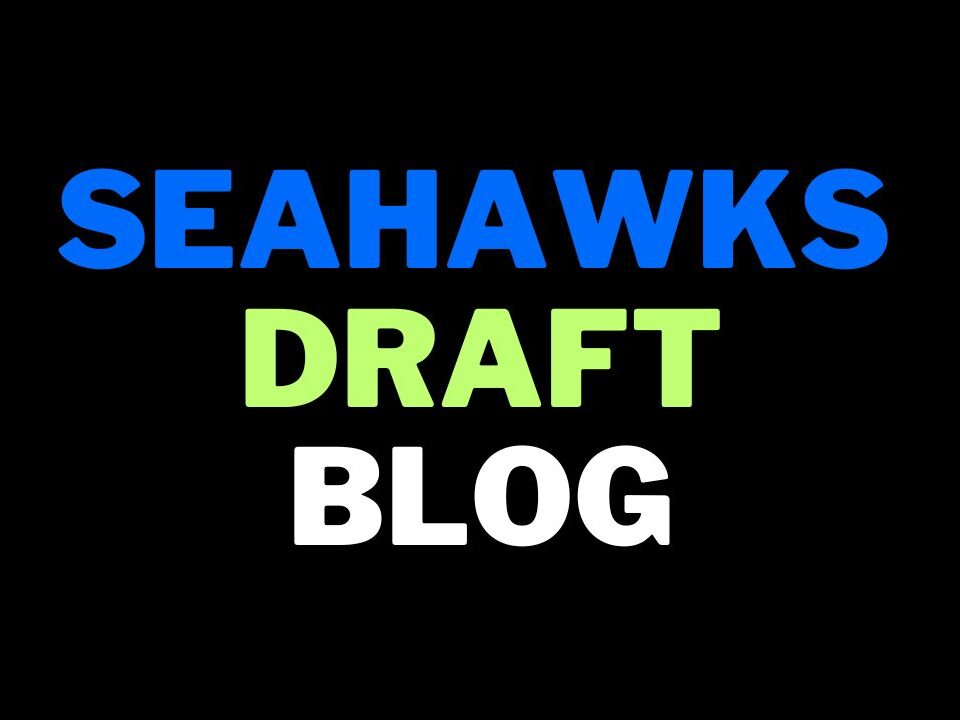
Seattle’s run defense has regressed in 2016
1. Running game
The Seahawks are 27th in the league with 978 rushing yards. They’re averaging 3.7 YPA and 87.8 YPG.
Last season Seattle had the third most productive running attack (2268 yards), averaging 4.5 YPA and 141.8 YPG.
This is a huge, unexpected regression.
Clearly Russell Wilson’s immobility has had an impact here. He’s never had less than 489 yards in a season and last year, during his best ever passing campaign, he still managed 553 yards. He currently has 159 at an average of 3.4 YPC. He’ll do well to top 300 yards for the year.
Losing Wilson’s threat to run discombobulated the offense and that cannot be underestimated. It’s still concerning they weren’t able to run productively with Wilson hampered. You shouldn’t be relying on that one aspect to prop up your preferred offensive identity. It suggests they’re highly susceptible without Wilson at 100% mobility. They can ill-afford to endure such damaging results every time a quarterback as active as Wilson picks up an injury.
The Seahawks’ general rushing attack hasn’t been this bad since it ranked last in the league in 2010. Their inability to run in 2010 provoked the Marshawn Lynch trade and Seattle spent their first two picks in the 2011 draft on run-blocking offensive linemen.
They could be similarly aggressive in the upcoming off-season. It wouldn’t be a surprise if they look to rectify this situation with additions to the offensive line and/or running back.
Thomas Rawls and C.J. Prosise are clearly very talented but so far neither has shown they can stay healthy. Do the Seahawks lack a bell-cow physical runner to compliment the two more athletic/explosive backs?
Do they also need to keep adding pieces to the offensive line? We’ve talked about Utah’s Garett Bolles and how he might be an ideal acquisition for either the left or right tackle position. There won’t be a ton of options in what looks to be a poor draft for offensive linemen.
It seems inevitable that they’ll be active in improving the run game unless there’s a major upturn in performance over the next few weeks.
2. Interior pass rush
In 2013 and 2014 the Seahawks were able to rely on at least one player to provide pressure and production at defensive tackle. In 2015 and 2016, that production has practically disappeared.
2013: Clinton McDonald — 6.5 sacks
2014: Jordan Hill — 6.5 sacks
2015: Jordan Hill — 0 sacks
2016: McDaniel/Rubin/Reed/Jefferson combined: 1.5 sacks
In fairness the EDGE pass rush has never been so productive during the Carroll era. Cliff Avril has 10 sacks (one short of equalling a career high), Frank Clark is already at 7.5 sacks and Michael Bennett, despite missing a few games, also has three sacks.
Yet it was quite telling that Carroll referenced trying to find an interior rush when they concluded the signing of John Jenkins — despite his physical appearance screaming ‘nose tackle’.
The Seahawks don’t necessarily need an Aaron Donald. A 10-sack interior presence in the mould of Donald or Ndamukong Suh isn’t a realistic target without a top-15 pick. They just need someone who can fill that 6.5 sack hole vacated by McDonald and Hill in 2013-14.
Quinton Jefferson might’ve developed into that man before he landed on injured reserve. Jordan Hill was cut after another injury during the summer. The question is now — do they take a chance on Jefferson in 2017 or do they go out and seek another body to try and fill this need?
It could be a pure defensive tackle like Florida State’s Derrick Nnadi. He has underrated talent as a pass rusher, a nice thick, powerful, explosive 6-1/312lbs frame and could be the answer. They might also fill the need with another inside/out rusher — someone capable of playing end in base and kicking inside when needed.
The upcoming draft looks set to be well stocked on the D-line and could provide a solution.
3. Run defense
One of the lesser talked about regressions in Seattle is the run defense. Last year the Seahawks didn’t give up a single 100-yard rusher during the regular season. They also led the league in total run defense.
Look at the difference over the years:
Total run defense (ranking in brackets)
2014: 1304 yards (#3)
2015: 1304 yards (#1)
2016: 1102 yards in 11 games (#14)
Yards per game (ranking in brackets)
2014: 81.5 (#3)
2015: 81.5 (#1)
2016: 100.2 (#14)
You could put it down to the loss of Brandon Mebane although the 2014 Seahawks coped without Mebane after he landed on injured reserved before week 11.
For whatever reason this defense has only done an average job overall against the run. And it’s not like the numbers are influenced by freaky Russell Wilson-esque QB gains. Here’s the list of QB’s they’ve faced this year and their running totals vs Seattle:
Ryan Tannehill: 17 yards
Case Keenum: 5 yards
Blaine Gabbert: 22 yards
Ryan Fitzpatrick: 5 yards
Matt Ryan: 2 yards
Carson Palmer: 8 yards
Drew Brees: 1 yard
Tyrod Taylor: 43 yards
Tom Brady: 7 yards
Carson Wentz: 2 yards
Jameis Winston: 12 yards
Adding to the intrigue is the way Seattle hasn’t given up many ‘explosive’ plays in the run game. They actually rank #3 in the NFL for limiting runs of +10 yards:
1. Baltimore — 17
2. New York Giants — 21
3. Seattle — 22
4. Green Bay — 22
5. Carolina — 25
However, their ‘stuff percentage’ (defined as the percentage of rushes stopped behind the LOS) is only #18 in the NFL at 8.9%. The Dallas Cowboys are stuffing 16.5% of runs on defense, Los Angeles are managing 15% and Green Bay 14.8%.
This seems to be a D-line issue and not a second level problem.
Based on my amateur eye test, I wouldn’t suggest Athyba Rubin, Jarran Reed and Tony McDaniel have played poorly. Yet perhaps needs two and three in this piece mesh together. Do they need a penetrating interior disruptor who not only impacts the passing game but also collapses the pocket and gets into the backfield to impact the running game too?
How often do you see Rubin, Reed or McDaniel pull off a dynamic swim/rip and force the RB to stall and adjust? How often are Seattle’s D-line tackling the runner at the LOS and not in the backfield?
How much is it down to a desire to focus on gap control, sound discipline and prevention of the big play versus being able to go out and actually make the big play as a Seahawks defensive tackle?
According to Sporting Charts, Seattle’s interior defensive linemen have contributed three TFL’s in total. For arguments sake, here’s the top performing DT’s in the league for TFL’s:
Aaron Donald — 15
Geno Atkins — 9
Kawann Short — 8
Timmy Jernigan — 8
Calais Campbell — 8
Kyle Williams — 8
Malik Jackson — 7
Aaron Donald, admittedly a truly elite player in the league, has 12 more TFL’s than Seattle’s collection of DT’s combined. Kyle Williams in Buffalo has personally accumulated five more than Seattle’s group.
It might not be a coincidence that Timmy Jernigan has eight TFL’s and Baltimore currently leads the NFL in run defense.
For the Seahawks to get back to being one of the best run defenses in the NFL — they probably need an impact player working the interior. Someone capable of getting 8-10 TFL’s in the way Jernigan has for the Ravens this year.
Two of the players named above — Calais Campbell and Kawann Short — are free agents at the end of the season. Are they too expensive for Seattle? Do they even reach the open market? Possibly not.
This is one of the reasons why a player like Derrick Nnadi might be intriguing. He has 9.5 TFL’s this year to go with his 5.5 sacks. He looks better, at least in my opinion, than Timmy Jernigan looked at FSU.
Again, it doesn’t necessarily have to be a pure DT. Demarcus Walker is an inside/out type of rusher and he has 16.5 TFL’s this season. Takk McKinley has 18 TFL’s. Solomon Thomas has 13. All three have the size and range to potentially play DE/DT.
If you want a list of the top performing players for TFL in college football, here you go. Note the national leader — Temple’s Haason Reddick — possibly an ideal candidate for the Seahawks to play SAM/LEO if he’s available in the round three range.
Other needs?
I’ve seen people suggesting receiver, SAM linebacker and cornerback recently. I think receiver would be an ideal ‘luxury’ pick if this was either a particularly good draft for WR’s (it isn’t) or the Seahawks didn’t have more striking needs elsewhere.
Fixing the run offense, run defense and finding an interior pass rush are critical needs for future success and for the core identity of the team. These have to take precedence over getting an upgrade over contracted players like Jermaine Kearse or Paul Richardson.
Basically you can live with Kearse and Richardson complimenting Doug Baldwin, Jimmy Graham and Tyler Lockett. I’m not sure you can live with the current running game or D-line performance.
The SAM position is basically a two-down role. The Seahawks keep K.J. Wright and Bobby Wagner on the field in any scenario and prefer to use an extra defensive back or pass rusher on key downs. Unless the player you’re drafting is a Bruce Irvin-style athlete capable of playing SAM and LEO, this is unlikely to be an area the Seahawks attack. It’s why Haason Reddick might be so appealing in the middle rounds.
Cornerback is also a slightly overrated option. The Seahawks have club control over DeShawn Shead in 2017 and they just re-signed Jeremy Lane to a decent contract. Corner hasn’t been a problem area short of a couple of iffy games for Lane and they prefer to develop players who fit a specific body type. It would be a bit of a surprise if the CB position wasn’t given, at best, the round 5-7 treatment in 2017.
If there is one other position they might focus on it could be safety. Not for any particular reason other than this is looking like a superb class for safety’s and they might wish to tap into the goodness. As noted this week, Shalom Luani’s backstory and fight to make a career out of football screams Seahawks. He could be their guy.



